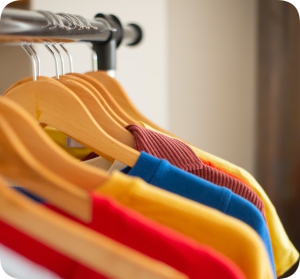 In recent years, fashion brands and retailers like H&M, Nike, Amazon and Target have responded to consumer calls for environmental sustainability by following an influential material rating system called the Higg Index. Introduced in 2011 by a group of companies led by Walmart and Patagonia, this metric is intended to help businesses shrink their environmental footprints by eliminating toxic chemicals and cutting down on water usage during production. According to critics, however, the Higg Index strongly recommends the use of synthetic fabrics derived from petroleum rather than natural fibers such as cotton and silk. This has led fashion brands to increasingly depend on materials like polyester or “vegan leather,” which was once known as plastic leather or “pleather.”
In recent years, fashion brands and retailers like H&M, Nike, Amazon and Target have responded to consumer calls for environmental sustainability by following an influential material rating system called the Higg Index. Introduced in 2011 by a group of companies led by Walmart and Patagonia, this metric is intended to help businesses shrink their environmental footprints by eliminating toxic chemicals and cutting down on water usage during production. According to critics, however, the Higg Index strongly recommends the use of synthetic fabrics derived from petroleum rather than natural fibers such as cotton and silk. This has led fashion brands to increasingly depend on materials like polyester or “vegan leather,” which was once known as plastic leather or “pleather.”
“The index is justifying the choices fashion companies are making by portraying these synthetics as the most sustainable choice,” said fashion industry analyst Veronica Bates Kassatly. “They’re saying: You can still shop till you drop, because everything is now so sustainably sourced.” For example, the Higg Index rates polyester as one of the world’s most sustainable fabrics based on data about European manufacturers gathered from a plastics industry group. In reality, however, most of the world’s polyester is produced in Asia where energy grids are less efficient and environmental laws are less stringent. Meanwhile, silk has a low rating on the Higg Index based on a study of farms in India which was not intended to be representative of global silk production.
“Higg’s members, a lot of them are fast fashion brands, and they all use mainly polyester. So it favors them to get polyester a better rating,” said Brett Mathews, chief editor of the fashion industry publication Apparel Insider. ”The net result is that the actual Higg score, which says this fiber is more sustainable than that one, is misleading to consumers.” The Sustainable Apparel Coalition runs the index on behalf of more than 150 global brands and claims that all data contained in the metric is “scientifically and externally reviewed.” Policymakers in the U.S. and Europe plan to develop guidelines in the coming months around environmental claims made by clothing brands, and experts predict that the Higg Index could serve as a sustainability benchmark. According to critics, though, depending on this metric could do little to curb the environmental excesses of the fashion industry, which accounts for as much as 8 percent of the world’s carbon dioxide emissions.
Questions:
- Why do critics claim that the Higg Index is potentially misleading to consumers?
- Do you think policymakers in the U.S. and Europe should use the Higg Index as a benchmark for future fashion industry guidelines? Why or why not?
